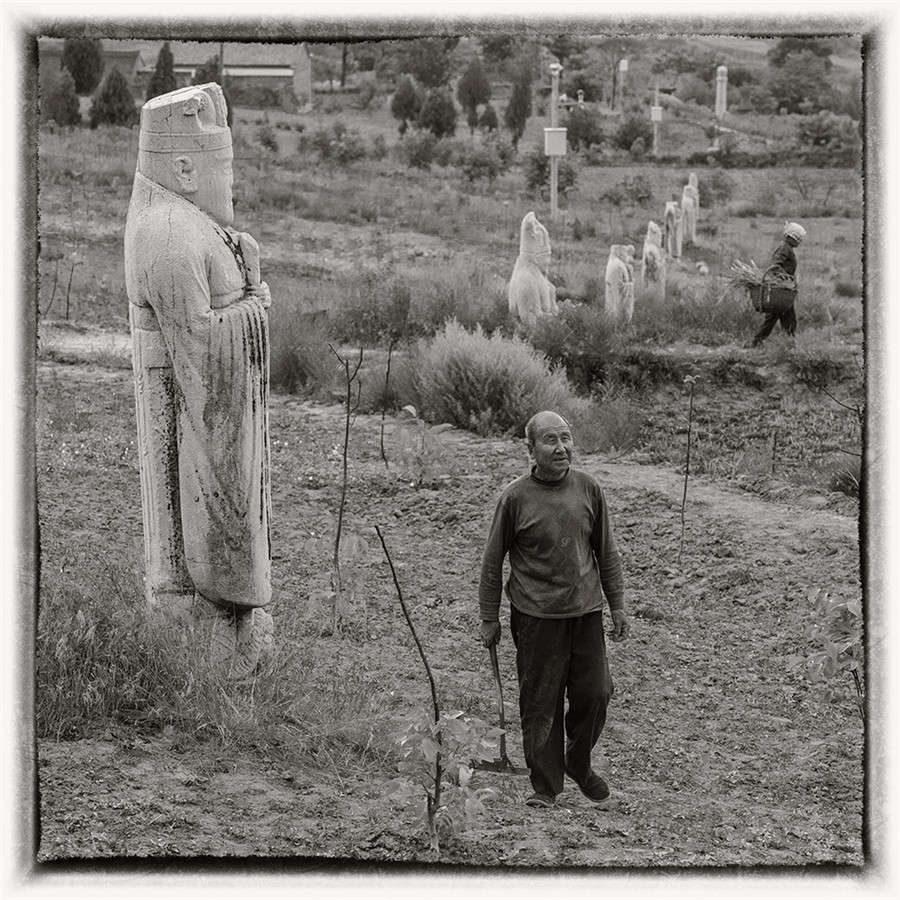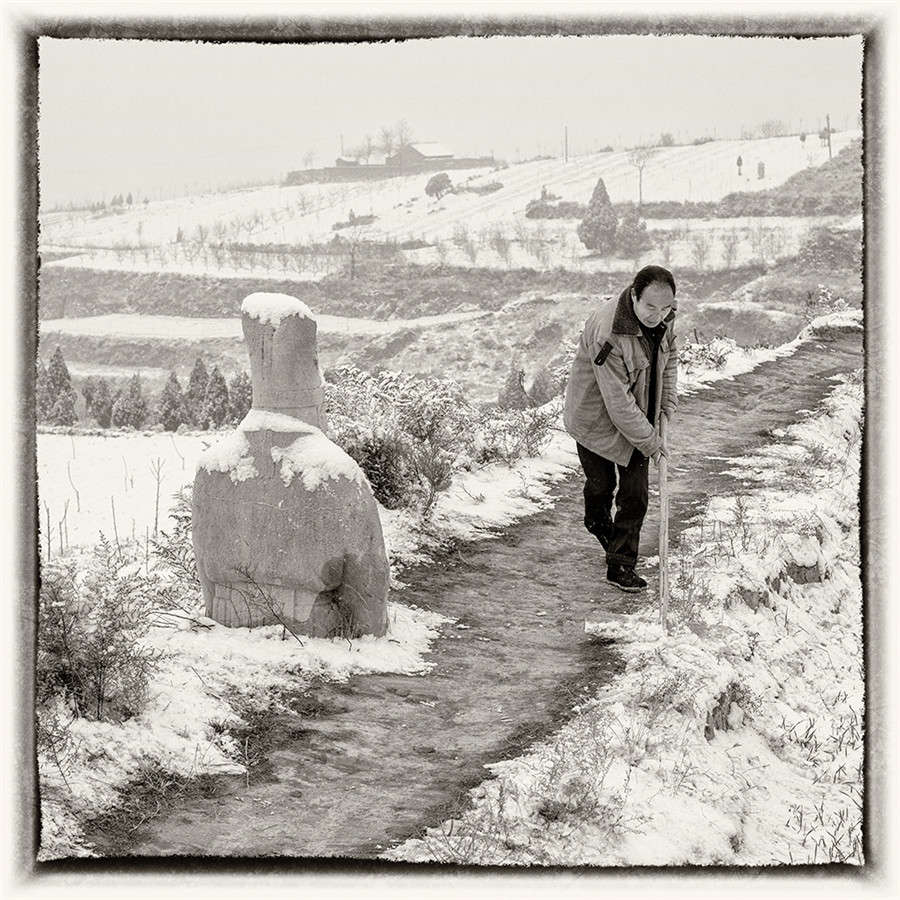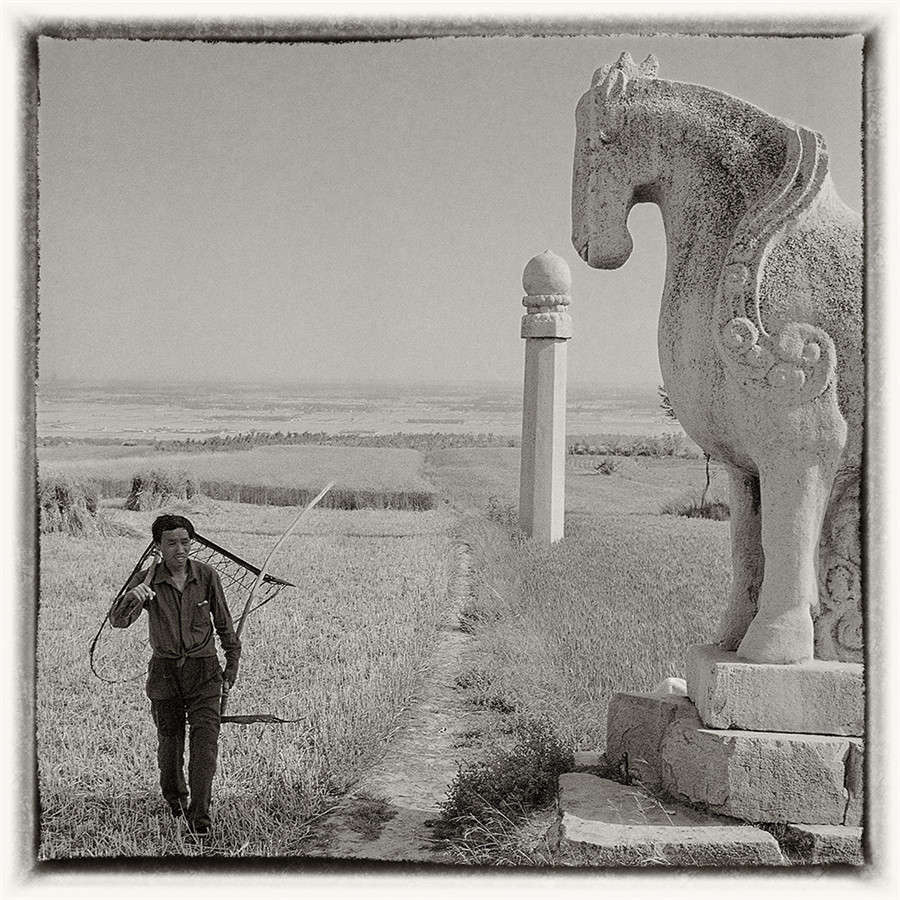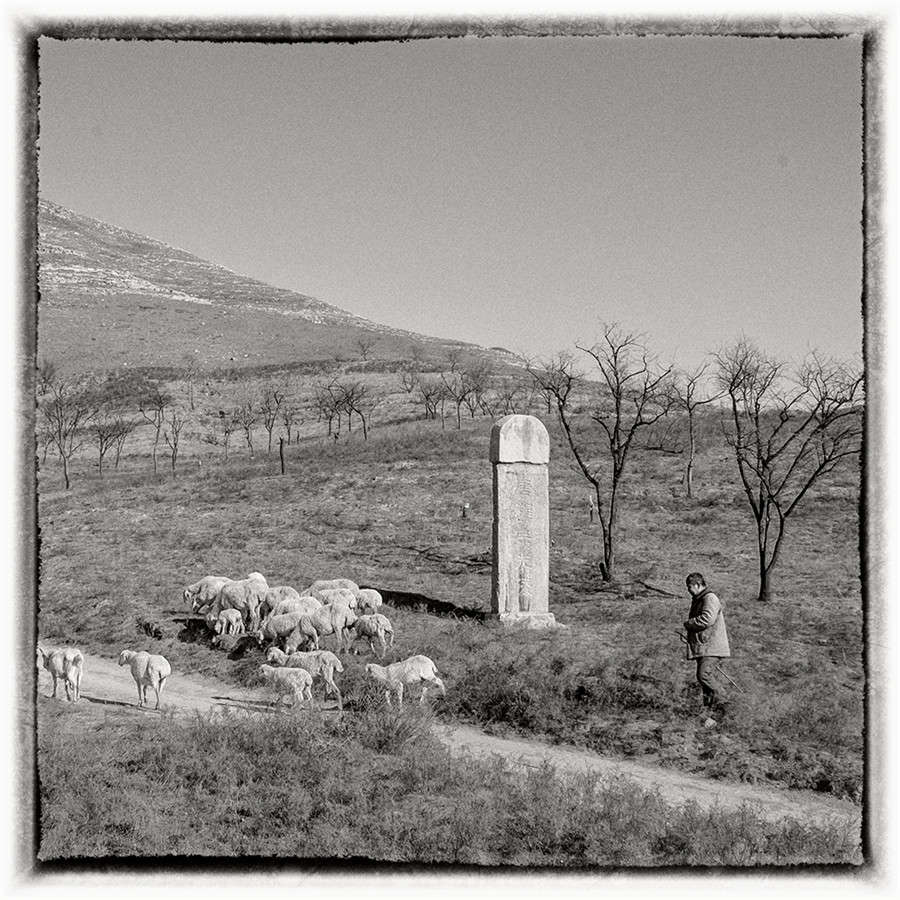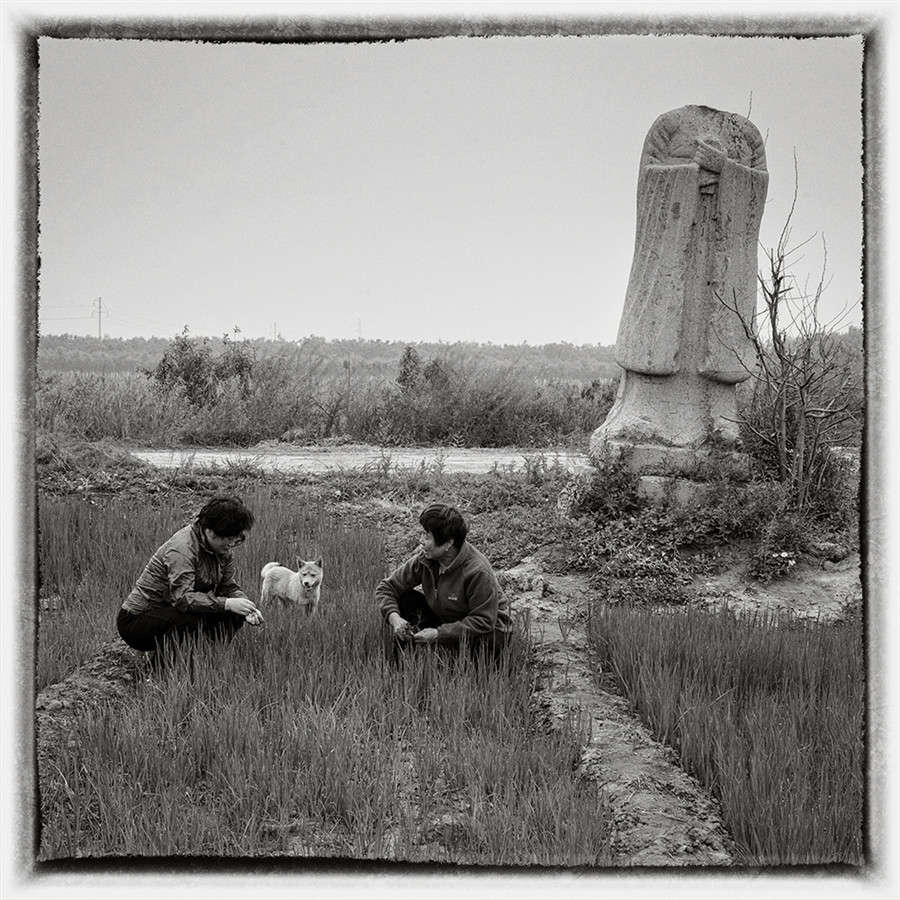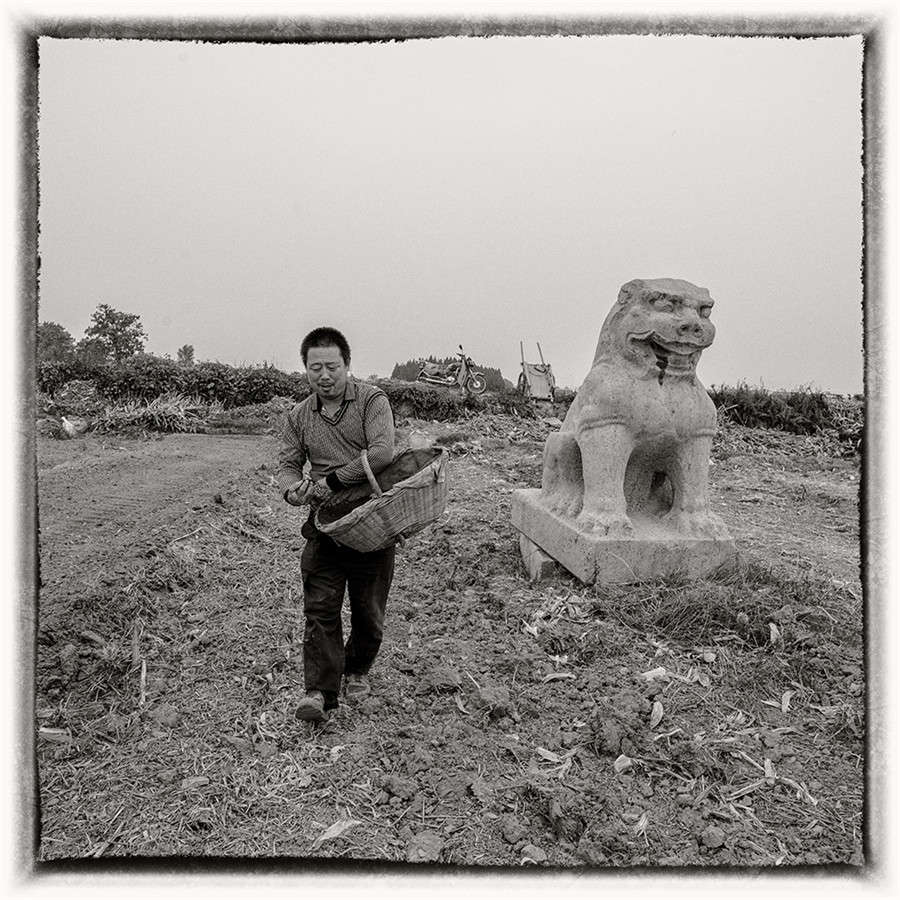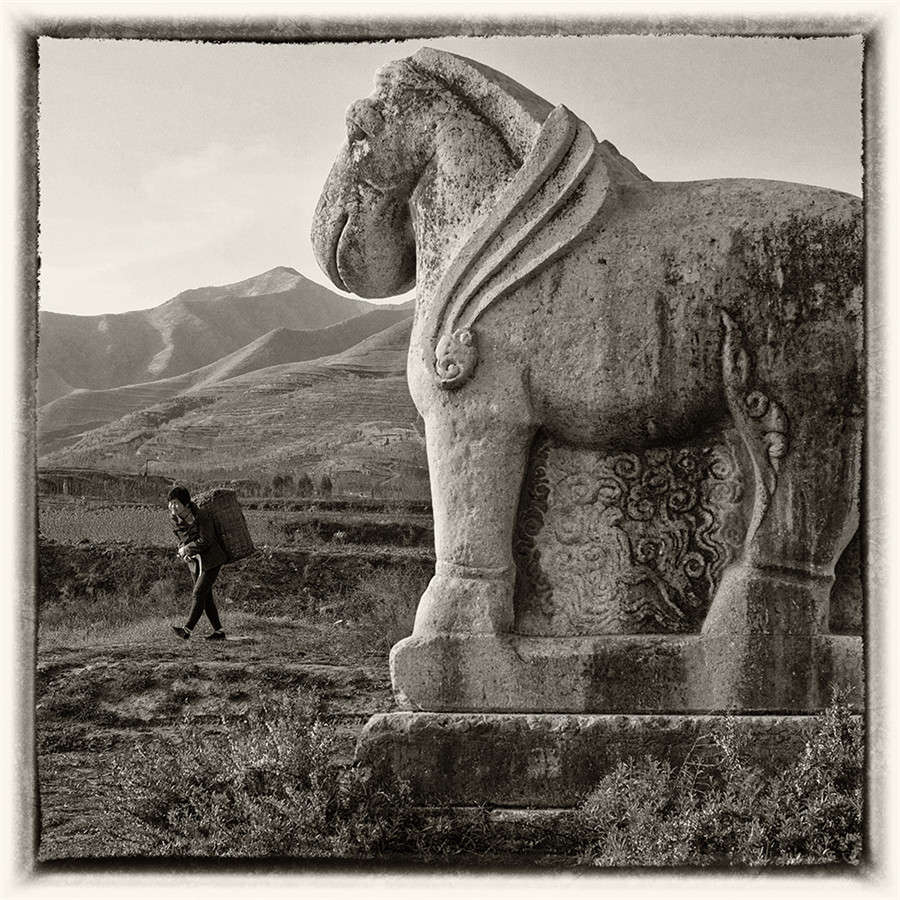DepthReading
Tang Dynasty imperial mausoleums captured on film
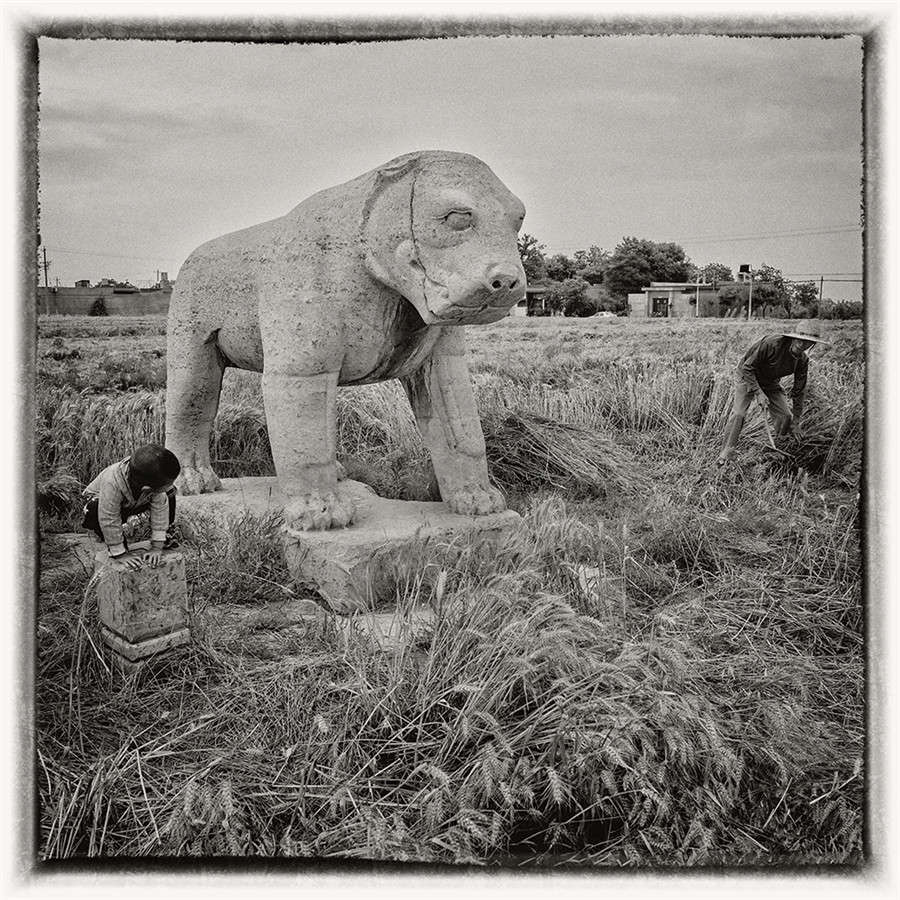 |
Farmers harvest wheat nearby the Xianling Mausoleum, the tomb of Emperor Gaozu, who was the founder of the Tang Dynasty. [Photo by Deng Hai/photoint.net] |
Generations of guardians in the Weibei plateau region of Shaanxi province have watched over the Tang Dynasty (AD 618-907) imperial mausoleums for more than 1,000 years.
Stone carvings of horses and figures stand strongly at the front of the mausoleums, with each carrying a profound history and representing the former glorious culture. Through vicissitudes of time, stone carvings have been eroded by nature or damaged by human beings. However, just as their post as tomb guardians, the figures maintain their duties and keep guarding the imperial mausoleums.
Standing for a millennium, the Tang Dynasty imperial mausoleums have retained rich historical information and reflect the great changes in the Li Tang 礼堂?是什么?第一次出现解释一下?society. The ancient tomb sculptures occupy a very important position in the history of Chinese art, and its distinctive style showcases traditional Chinese culture, especially from the Tang Dynasty.
The Tang Dynasty imperial mausoleums also served as a model for the imperial mausoleum system in later dynasties, and had huge influences on the arrangement of the cemetery, the style of the stone carving and funeral rituals for later generations.
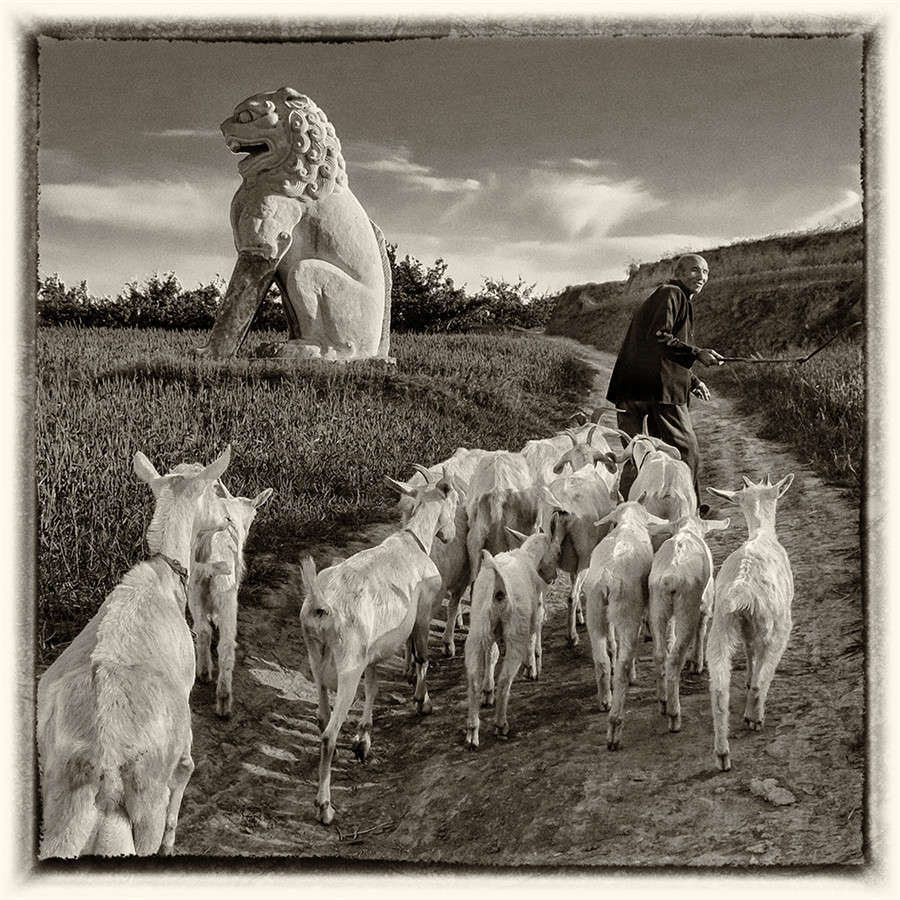 |
A farmer herds his sheep nearby the Qianling Mausoleum, the tomb of the third Tang emperor, Li Zhi, and Empress Wu Zetian. It is located on Liangshan Mountain, about six kilometers north of the Qianxian county seat and 80 kilometers from Xi'an, capital of Shaanxi province. [Photo by Deng Hai/photoint.net] |
In ancient China, in order to last keep imperial power for eternity, imperial mausoleums became a reflection of the social ritual and system. The site selection of the imperial mausoleum was regarded as a matter of primary importance as its feng shui was considered to affect the fate of the whole country. Therefore, the scale of imperial mausoleum reflects the rise and fall of a dynasty.
Due to feng shui factors, 18 Tang Dynasty imperial mausoleums were located were built on high mountains and steep slopes, which also had little fertile land. For more than 1000 years, the guardians, who lived near the royal tombs, kept the most primitive way of farming.
Nevertheless, following the footsteps of their predecessors, the figures kept guarding the imperial mausoleums and offered sacrifice to the passing ancestors.
Photographer Deng Hai has focused his lens on the Tang Dynasty imperial mausoleums and the remaining tomb guardians, who devoted their live lives to defending China's historical and cultural relics.
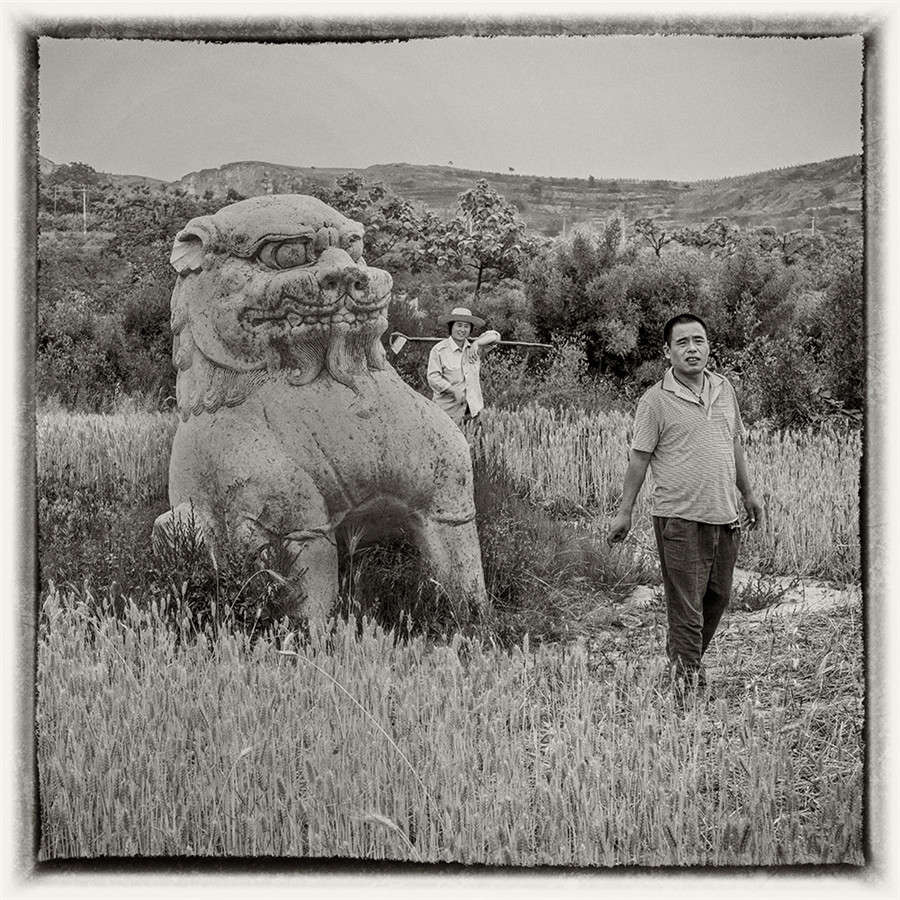 | ||||||||||||||
Famers walk past the Dingling Mausoleum, the tomb of Emperor Zhongzong of the Tang Dynasty. [Photo by Deng Hai/photoint.net]
|
Category: English
DepthReading
Key words:

